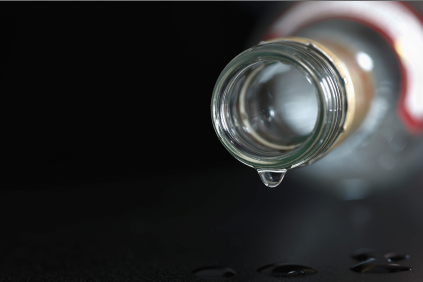
Recent deaths shed light on the possible dangers of uncoordinated regulatory policy.
Bootlegged alcohol mixed with lethal methanol has resulted in at least thirty-one confirmed deaths. This is not a new episode from the TV show Boardwalk Empire. It’s a recent story from the Czech Republic where regulatory overseers failed to prevent the deaths of dozens of people over five weeks in two countries.
The Czech Republic has a long tradition of alcohol production and consumption. It has the fifth highest rate of pure alcohol consumption after Moldova, Belarus, Ukraine and Estonia. And, in the case of beer consumption per capita, the Czech Republic is number one in the world.
But the alcohol in beer and even stiff drinks is not the same as methanol. The first case of methanol poisoning was reported in early September, and was discovered to have come from a street kiosk where alcohol was sold from plastic barrels. In response, local authorities increased field inspections in risky shopping areas. Later that month, the Czech government implemented a ban on the sale of alcoholic beverages containing twenty percent alcohol or higher at outdoor markets, market stalls, and street kiosks. In the initial days following the first poisoning, the risk had been thought to be linked to very cheap liquor sold in plastic barrels or undecorated clear bottles.
However, new cases of poisoning started to emerge in connection with higher-end alcohol purchases in other regions of the Czech Republic. Subsequently, the government decided to promulgate an exceptional measure banning the sale of spirits containing twenty percent or more ethanol by volume in all stores nationwide. This measure was later tied to a ban on broadcasting TV commercials for liquor containing twenty percent or higher alcohol content. About a week later, in late September, the Czech government banned the export of liquor to other countries, including the EU single market. The export ban was enforced in reaction to a recommendation from the European Commission.
Four days after implementing the export ban, police investigators announced the arrest of suspects as well as the seizure of a vast volume of methanol.
With the passage of another two days, the Czech government relaxed the liquor prohibition. Liquor bottled before January 2012 could be sold, while liquor bottled between January and September 2012 could be sold with a certification proving origin of production. In addition, the Ministry of Finance launched a new design for duty stamps for bottle labeling.
Ex-post analysis of actions taken by the Czech authorities in the years preceding the methanol crisis provides a great example of the institutional phenomenon known as “tunnel vision“, where regulatory bodies pursue single-minded and uncoordinated actions without considering the broader effects of their decisions.
In 2009, the Czech Ministry of Finance increased the excise tax rate on liquor sales in order to help fill the growing budget gaps that resulted from the then-current economic crisis. Surprisingly, this increase resulted in a six percent drop in overall excise tax collection from liquor and a twenty-five percent reduction in production from local Czech distillers the following year.
More significantly, as the ministry increased the excise tax, the black market had a new incentive to grow. The Czech Customs Administration, a governmental body responsible for collecting excise taxes, reported an increase in bootlegging cases. Furthermore, the Customs Administration knew that the bootleg liquor contained chemical residues of industrial ethyl alcohol and antifreeze. However, perhaps because they were a tax collection agency rather than a public health agency, they considered the illegal liquor production more of a tax fraud than as a major health risk to the general public.
The Czech Agriculture and Food Inspection Authority, a state authority responsible for the supervision of safety, quality and labeling of foodstuffs, had carried out inspections and sample testing of alcohol in the past. However, during this period its inspectors were primarily focused on testing the quality of Beaujolais type wines and cheap imported beers.
The Czech Union of Producers and Importers of Spirits, an association of the fourteen largest distilleries, expressed concerns about some small local distilleries and their low pricing in recent years. Some non-member companies kept their prices on level with production costs and taxation. A registered small distillery was reportedly involved in bottling and distributing the tainted methanol-contained spirits. Despite the concerns raised, no regulatory authority took action.
Tunnel vision at key regulatory agencies led to the failure to identify harbingers of this disaster. This regulatory failure came at a high price and should be further analyzed in order to encourage the adoption of new regulatory principles, risk evaluations, and better inter-agency coordination.



